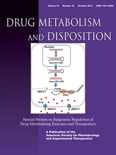
DRUG METABOLISM AND DISPOSITION
Scope & Guideline
Your Gateway to Cutting-Edge Drug Research
Introduction
Aims and Scopes
- Pharmacokinetics and Drug Disposition:
Research articles often explore the pharmacokinetics of drugs, including absorption, distribution, metabolism, and excretion (ADME). This encompasses both in vivo and in vitro studies, utilizing physiologically based pharmacokinetic modeling to predict human responses. - Drug-Metabolizing Enzymes:
A key focus is on cytochrome P450 enzymes and other drug-metabolizing enzymes, examining their roles in drug metabolism, genetic polymorphisms, and variations in enzymatic activity across different populations. - Transport Mechanisms:
The journal highlights studies on drug transporters, including their regulation, function, and impact on drug absorption and disposition, emphasizing the interplay between metabolic enzymes and transport systems. - Toxicology and Drug Safety:
Research often addresses the toxicological aspects of drug metabolism, including the identification of metabolites that may contribute to adverse drug reactions and strategies for mitigating these effects. - Clinical Relevance and Biomarkers:
The journal emphasizes the clinical implications of drug metabolism research, including the identification of biomarkers for drug efficacy and safety, and the impact of genetic and environmental factors on individual drug responses. - Innovative Methodologies:
The use of novel experimental approaches, such as high-throughput screening, advanced analytical techniques, and computational modeling, is frequently reported to enhance our understanding of drug metabolism and disposition.
Trending and Emerging
- Precision Medicine and Pharmacogenomics:
There is an increasing emphasis on precision medicine and pharmacogenomics, as studies investigate how genetic variations affect drug metabolism, efficacy, and safety, paving the way for individualized therapeutic strategies. - Physiologically Based Pharmacokinetic (PBPK) Modeling:
The use of PBPK modeling is on the rise, allowing for more accurate predictions of drug behavior in humans based on in vitro data, enhancing the relevance of preclinical studies to clinical outcomes. - Gut Microbiome Interactions:
Emerging research on the role of the gut microbiome in drug metabolism is gaining traction, highlighting how microbial metabolites can influence drug efficacy and toxicity. - Transporter Biology and Drug Disposition:
There is a growing focus on the roles of transporters in drug absorption and disposition, particularly how they interact with metabolic enzymes and their implications for drug-drug interactions. - Innovative Drug Delivery Systems:
Research into novel drug delivery systems, such as nanoparticles and liposomal formulations, is trending, reflecting a broader interest in optimizing drug bioavailability and therapeutic outcomes. - Environmental and Dietary Influences:
Recent studies are increasingly examining how environmental factors and dietary components affect drug metabolism, emphasizing the importance of lifestyle in pharmacokinetic profiles.
Declining or Waning
- Traditional In Vitro Models:
There seems to be a waning interest in conventional in vitro models for drug metabolism, such as using only liver microsomes or hepatocytes, as researchers increasingly adopt more sophisticated systems like 3D cell cultures or organ-on-chip technologies. - Non-Cytochrome P450 Enzyme Studies:
Research specifically focused on non-cytochrome P450 enzymes appears to be less frequent, suggesting a shift towards more detailed investigations of cytochrome P450 enzymes and their interactions with other metabolic pathways. - General Drug Interaction Studies:
There is a noticeable decline in the publication of generic drug-drug interaction studies without a specific focus on mechanisms, as the field moves towards more nuanced explorations of specific pathways and genetic influences. - Animal Models for Drug Metabolism:
The reliance on traditional animal models for drug metabolism studies is decreasing, with a growing emphasis on humanized models and in vitro systems that better predict human responses. - Historical Perspectives:
Papers providing broad historical overviews on drug metabolism topics are becoming less common, indicating a shift towards more focused, cutting-edge research that addresses current challenges in drug metabolism and pharmacokinetics.
Similar Journals
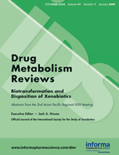
DRUG METABOLISM REVIEWS
Illuminating the path of drug discovery and development.Drug Metabolism Reviews is a premier journal dedicated to the dissemination of scientific research and reviews in the field of pharmacology, toxicology, and pharmaceutics, published by Taylor & Francis Ltd. With its inception dating back to 1972, this journal has consistently provided an authoritative platform for scholars and professionals from diverse disciplines to explore the intricate mechanisms of drug metabolism and their implications for therapeutic applications. The journal enjoys commendable rankings, placing in the Q2 quartile for Pharmacology (medical) and the Q1 quartile in the miscellaneous subfield, signaling its significant impact within the community. Notably, it is recognized within the top 96th percentile in General Pharmacology, Toxicology and Pharmaceutics, affirming its esteemed position among academic publications. Although it operates under a subscription model, Drug Metabolism Reviews remains an essential resource for researchers, professionals, and students seeking to deepen their understanding of drug interactions, safety, and efficacy. The insights shared within its pages contribute vital knowledge to the global discourse on drug development and personalized medicine.

AAPS Journal
Connecting Researchers and Innovators in Pharmaceutical Sciences.AAPS Journal, published by Springer in the United States, is a leading peer-reviewed journal dedicated to the advancement of research in the field of Pharmaceutical Sciences. With an impressive Q1 rank in its category and a position within the 81st percentile of Scopus rankings, it serves as a vital resource for researchers and professionals seeking to disseminate impactful findings and innovative methodologies. The journal publishes high-quality original research, review articles, and technical reports aimed at addressing the multifaceted challenges in pharmacology, toxicology, and pharmaceutics. Operating under an Open Access model, AAPS Journal ensures broad dissemination of knowledge, contributing to the enhanced visibility and accessibility of research outputs. With a publication window spanning from 1999 to 2024, it continues to shape the future of pharmaceutical research and its applications. Researchers, students, and industry professionals will find a valuable repository of cutting-edge knowledge in this esteemed journal.
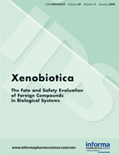
XENOBIOTICA
Connecting Research with Real-World Implications.XENOBIOTICA is a premier journal in the field of pharmacology and toxicology, published by Taylor & Francis Ltd. With an ISSN of 0049-8254 and E-ISSN 1366-5928, this journal has been at the forefront of research since 1971, providing critical insights and advancements up until 2024. It is recognized for its rigorous peer-reviewed content, occupying a third quartile ranking across various categories including Biochemistry, Health, Toxicology, and Pharmacology as of 2023. The journal serves as a pivotal platform for disseminating innovative findings that address the impact of xenobiotics on health and the environment, making it an essential resource for researchers, professionals, and students engaged in these multidisciplinary fields. While it does not currently offer open access, it is widely respected for its contribution to science, evidenced by its Scopus rankings across different areas of study. The journal encourages submissions that push the boundaries of knowledge and transform our understanding of the effects of chemical substances on living organisms.

International Journal of Pharmacology
Innovating Insights in Drug Development and SafetyWelcome to the International Journal of Pharmacology, a key publication in the field of pharmacology, published by ASIAN NETWORK SCIENTIFIC INFORMATION (ANSINET). Since its inception in 2006, this journal has provided a vital platform for researchers and professionals to disseminate their findings and insights in pharmacology, toxicology, and pharmaceutics. Despite recent discontinuation in Scopus coverage, the journal's dedication to fostering scientific dialogue continues to attract contributions from esteemed scholars globally. With an **ISSN of 1811-7775** and **E-ISSN of 1812-5700**, the journal seeks to bridge the gap between laboratory research and clinical application, promoting a deeper understanding of drug actions and interactions. Although it operates under traditional access options, the relevance of its published studies to ongoing pharmacological research remains significant.
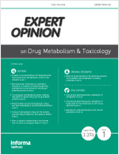
Expert Opinion on Drug Metabolism & Toxicology
Leading the Charge in Drug Metabolism InsightsExpert Opinion on Drug Metabolism & Toxicology, published by Taylor & Francis Ltd, is a leading journal in the fields of pharmacology and toxicology, with a distinguished reputation gleaned from its Q1 rankings in both disciplines as of 2023. With an ISSN of 1742-5255 and an E-ISSN of 1744-7607, this journal aims to foster innovative discussions and critical insights into the metabolism and toxicological assessment of drugs, appealing to a wide audience of researchers, professionals, and students. The journal's commitment to maintaining high academic standards is reflected in its placement within the top quartiles of the Scopus rankings—ranked 17th in Toxicology and 73rd in Pharmacology—demonstrating its significant impact and relevance in advancing knowledge within the drug development sector. Published since 2005 and converging into 2024, it provides a platform for timely dissemination of expert opinions, systematic reviews, and original research, reinforcing its vital role in shaping the future of pharmacological sciences in an ever-evolving landscape.

DRUGS IN R&D
Catalyzing discoveries in drug research and development.DRUGS IN R&D is a premier open access journal dedicated to advancing the field of pharmacology and drug development. Published by Springer International Publishing AG, this journal has been a valuable resource for researchers and professionals since its inception in 1999, contributing critical insights into the pharmacological sciences. With an impressive Impact Factor reflecting its significance, DRUGS IN R&D ranks in the Q2 quartile for Pharmacology, according to 2023 metrics, and ranks #151 out of 313 in the field of pharmacology and toxicology on Scopus. This journal offers an open access format, ensuring high visibility and accessibility of research findings to a global audience, supporting the intrepid pursuit of knowledge in drug research and development. By facilitating comprehensive discussions and innovative research findings, DRUGS IN R&D plays a crucial role in shaping the future landscape of pharmacological studies and advancements.

Advances in Pharmacological and Pharmaceutical Sciences
Empowering Global Collaboration in Pharmacology.Advances in Pharmacological and Pharmaceutical Sciences is a premier open-access journal published by Hindawi Ltd. based in the United Kingdom. Established in 2020, the journal swiftly garnered attention for its commitment to disseminating high-quality research in the realms of pharmacology, toxicology, and pharmaceutical sciences. It holds a commendable impact with notable quartile rankings, including Q2 in both Organic Chemistry and Pharmacology, indicating its importance within these disciplines. By embracing an open-access model, the journal ensures that research findings are widely available, promoting increased visibility and collaboration among researchers, professionals, and students globally. With an ongoing convergence of insights projected through 2024, Advances in Pharmacological and Pharmaceutical Sciences aims to address critical issues and advancements in drug development and therapeutic practices, making it an invaluable resource for those at the forefront of scientific inquiry in pharmacology and related fields.

ASSAY AND DRUG DEVELOPMENT TECHNOLOGIES
Transforming Drug Discovery with Innovative Assay TechniquesASSAY AND DRUG DEVELOPMENT TECHNOLOGIES is a peer-reviewed journal published by Mary Ann Liebert, Inc., focused on the innovative fields of pharmacology and drug development. With its ISSN 1540-658X and E-ISSN 1557-8127, the journal has successfully contributed to the scientific community since its inception in 2002, converging into one comprehensive resource by 2024. Positioned in the Q3 quartile for Drug Discovery and Q4 for Molecular Medicine as per the 2023 rankings, the journal is dedicated to disseminating cutting-edge research that addresses the complexities of drug assay techniques and their implications in therapeutics. Although currently not an open-access publication, it offers significant insights and findings valuable to researchers, professionals, and students in the realm of biochemistry and pharmacology. With a commitment to advancing knowledge and innovation, ASSAY AND DRUG DEVELOPMENT TECHNOLOGIES continues to be an essential platform for the latest advancements in drug discovery and development.
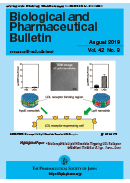
BIOLOGICAL & PHARMACEUTICAL BULLETIN
Fostering Excellence in Biomedical and Pharmaceutical DiscourseBIOLOGICAL & PHARMACEUTICAL BULLETIN, published by the PHARMACEUTICAL SOC JAPAN, is a prominent peer-reviewed journal that serves the fields of medicine, pharmaceutical science, and pharmacology. With an ISSN of 0918-6158 and an E-ISSN of 1347-5215, this publication has been crucial in disseminating innovative research since its inception in 1993, and it continues to contribute significantly to the body of knowledge as it converges towards 2024. Despite being classified as a non-open access journal, it maintains a respectable Q3 ranking in Medicine (miscellaneous) and Q2 in Pharmaceutical Science, highlighting its critical role in advancing scientific discourse in these areas. With Scopus rankings placing it in the 51st percentile for Pharmaceutical Science and 38th percentile for Pharmacology, BIOLOGICAL & PHARMACEUTICAL BULLETIN is an essential resource for researchers, professionals, and students looking to stay abreast of cutting-edge developments and trends in biomedicine and drug development.
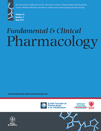
FUNDAMENTAL & CLINICAL PHARMACOLOGY
Connecting researchers and practitioners in the world of pharmacology.FUNDAMENTAL & CLINICAL PHARMACOLOGY is a distinguished journal dedicated to advancing the fields of pharmacology and clinical medicine. Published by WILEY, this journal serves as a pivotal platform for researchers, healthcare professionals, and students alike to disseminate innovative research findings and clinical applications. With an impressive history spanning from 1987 to 2024, it has consistently maintained its relevance in the scientific community, evidenced by its Q2 quartile ranking in both Pharmacology and Pharmacology (medical) categories for 2023. The journal's diverse publication range, which includes original research articles, reviews, and clinical studies, helps bridge the gap between fundamental research and practical application in healthcare settings. Although it does not offer open access, its rigorous peer-review process ensures that published content meets the highest scholarly standards, making it a vital resource for those aiming to stay at the forefront of pharmacological sciences.